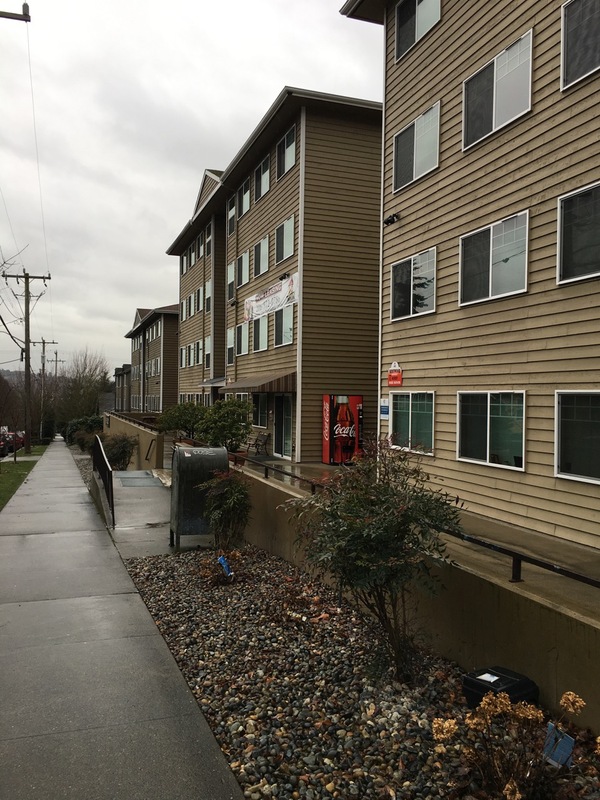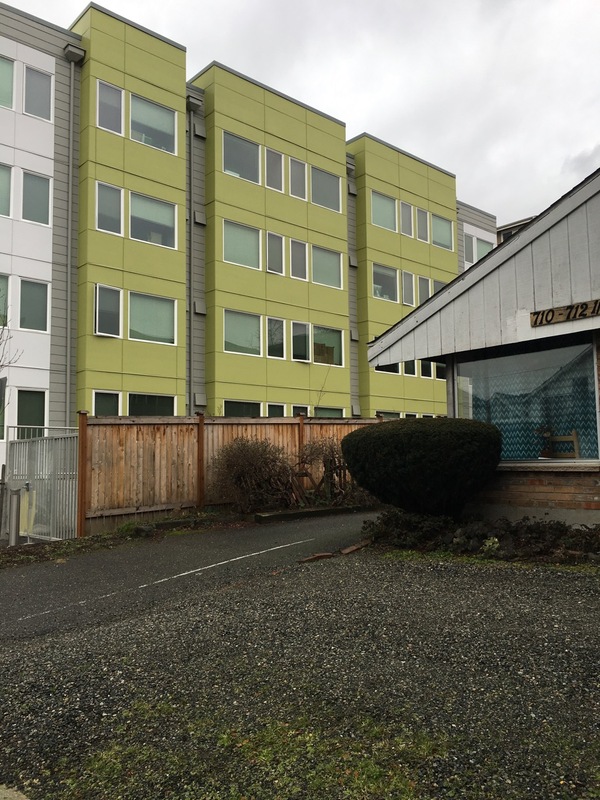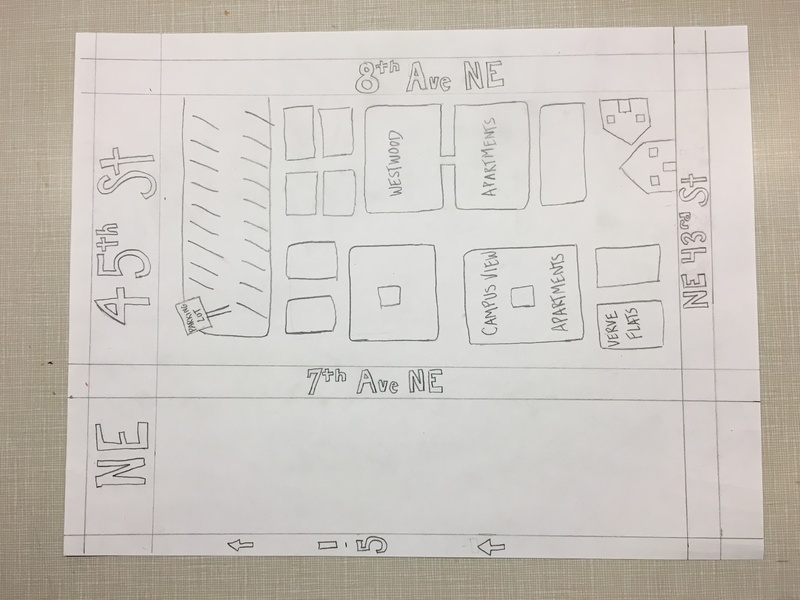Site Report 1: The Deep Read

The Westwood Apartment complex on 8th Ave NE. University District (Seattle WA). Taken on January 19, 2017.

Juxtaposition between new and old construction, the modern Velve Flats neighboring a rental home on NE 43rd St. University District (Seattle, WA). Taken on January 19, 2017.

A view of the large parking lot on the NE 45 St side of the block with apartment buildings and rental properties in the background. University District (Seattle, WA). Taken on January 19, 2017.

A hand drawn map of the block. University District (Seattle, WA). Drawn and photographed on January 19, 2017.
The block between 7th Ave Northeast and 8th Ave Northeast, and Northeast 45th Street and Northeast 43rd Street is a purely residential block. Eighty percent of the block is comprised of apartment buildings and rental properties, while the other twenty percent is taken up by a large commuter parking lot. Especially on a gray and drizzly day, the block has a distinguishably Seattle, urban feel. Across the street is an art supple store, and the wall bordering the parking lot is painted with a colorful mural. It is not particularly clean. Especially on garbage day, stray pieces of trash litter the ground around the green and gray totes that have been pulled out to the curb. The road is narrow with cars parked on both sides of the streets, the pavement rough and patched from years of travel. Telephone wires line the street as indicators of the block’s inner-city location. As John R. Stilgoe writes in his book Outside Lie Magic, "nothing screams more loudly of the still-developing-nation status of the United States than the creosote-treated poles, all slightly out of perpendicular, marching along" (Stilgoe, 21). The telephone poles that line the streets where trees used to be are indicative of the area's developing and urban status.
The apartment buildings and rental properties that fill the majority of the block are a mixture of new and older buildings. The properties are clearly targeting university students with signs posted on the buildings advertising spaces to rent with phone numbers and management contact information. A couple buildings on the block are owned by the same company, and are grouped together and connected as the Westwood Apartments. They are about 4 stories tall, towering over the smaller original home rental properties. They are painted a beige color and attempt to look like residential properties, but their new construction adds a commercial feel to the block. They are joined by the Campus View Apartments who are of similar size and color and the Velve Flats an apartment and studio complex with more modern architecture. The block is right off the freeway and is about a 20-minute walk, 10-minute bus ride from the University of Washington, appealing to both downtown commuters and students. The new construction on the block that has overtaken the original smaller family homes, is an indication of the block’s prime location. The new construction may also be an indication of the shifting demographics of the block. Historically, it has been minorities and marginalized groups that have had to live in the less-clean "sketchier" neighborhoods. However, with the growth of the University and the high demand for student housing, the block is undergoing somewhat of a face-lift as it shifts from housing lower-income minority families to university students.
Clearly today this block is part of a residential area rather than a retail or commerce based area, however has it always been this way? If not, what kinds of businesses were here? On the other hand, if it has always been a residential area, what kinds of people have lived here throughout the years? How has the demographics of the area changed and evolved? Currently the block is right off the freeway, which is a large selling point. However, the freeway was not always there. Was there always a main highway or road nearby this block? Or at one point was it more disconnected from the rest of the city? How did the construction of the highway affect the people living on the block and how did it change who was attracted to the area?
